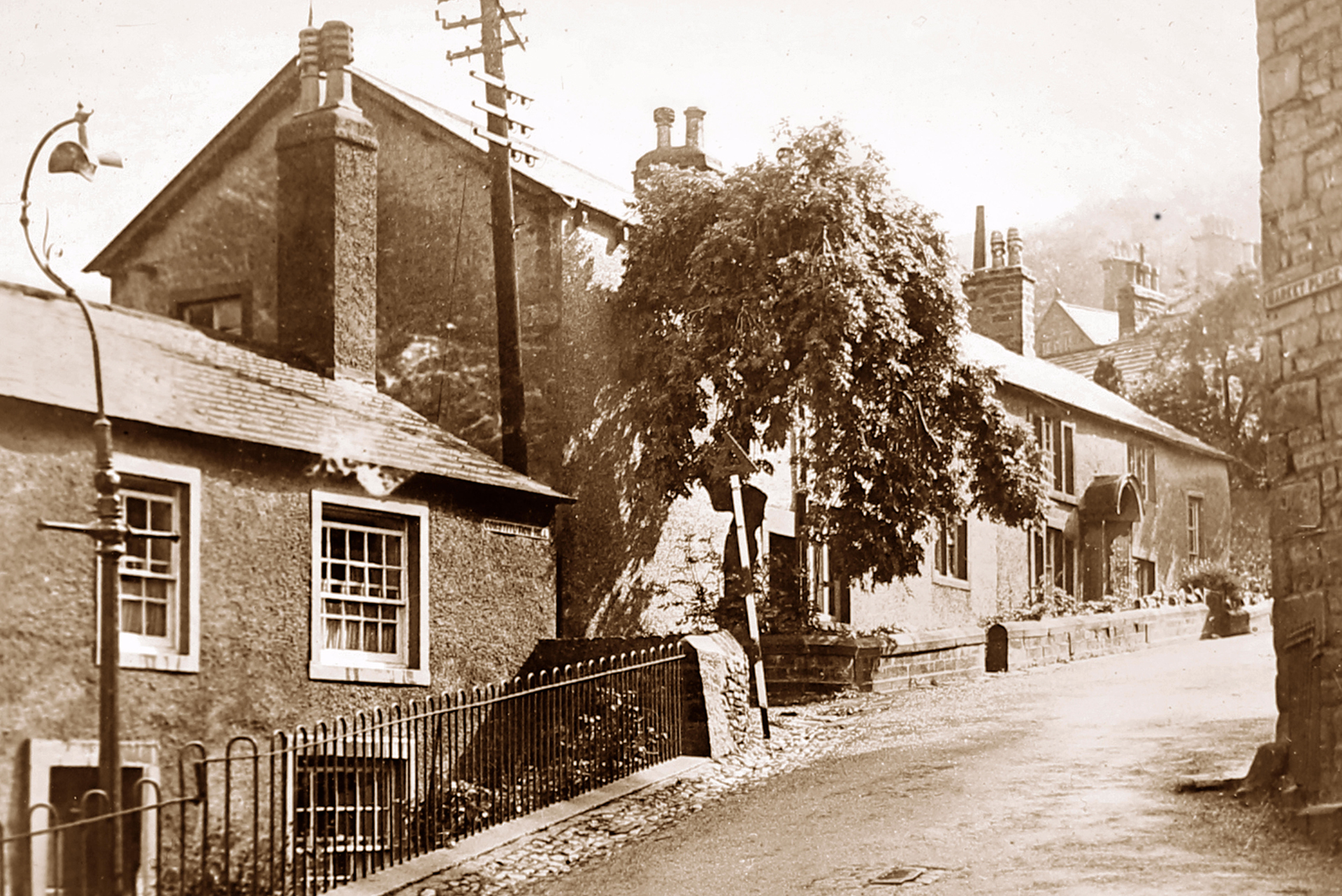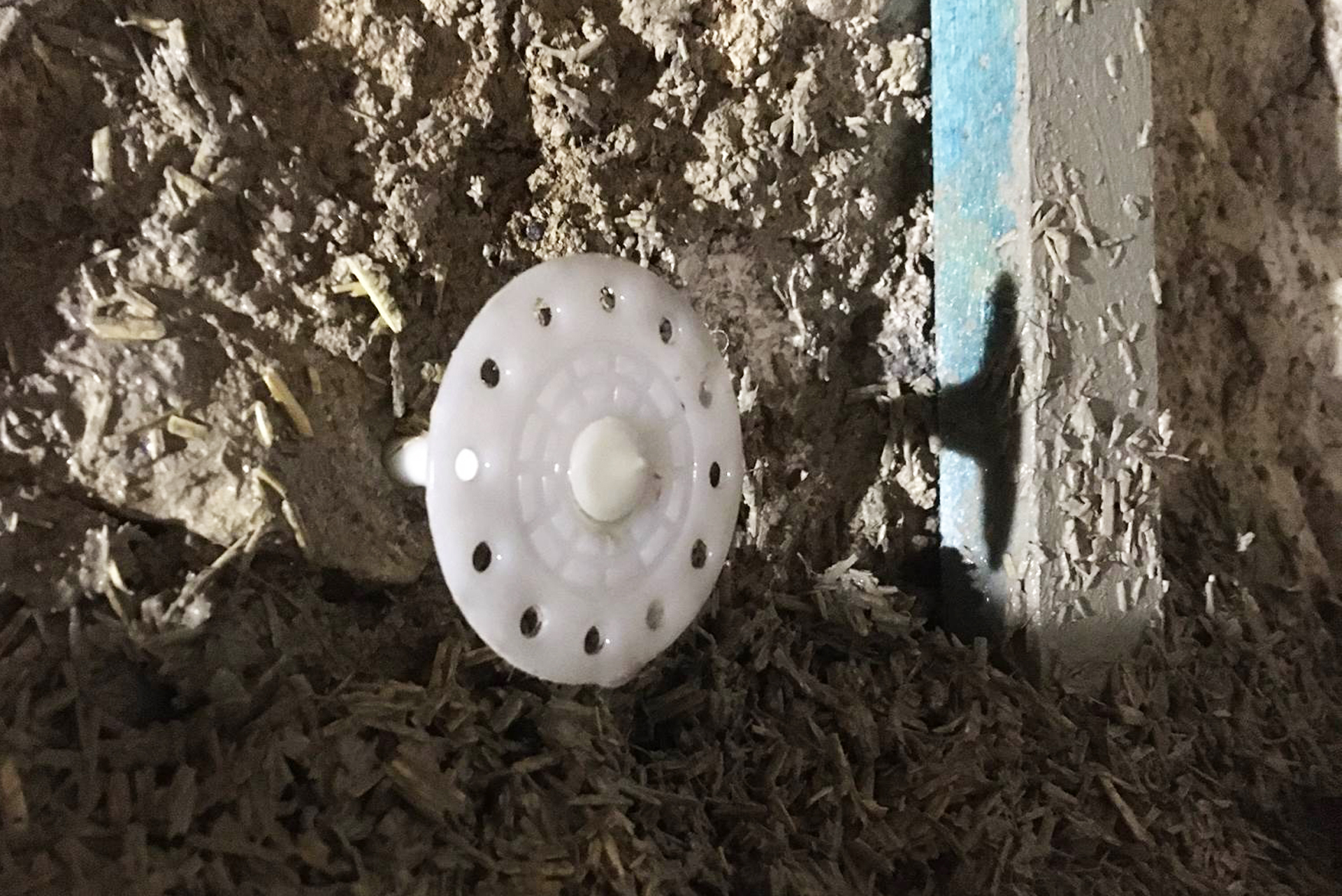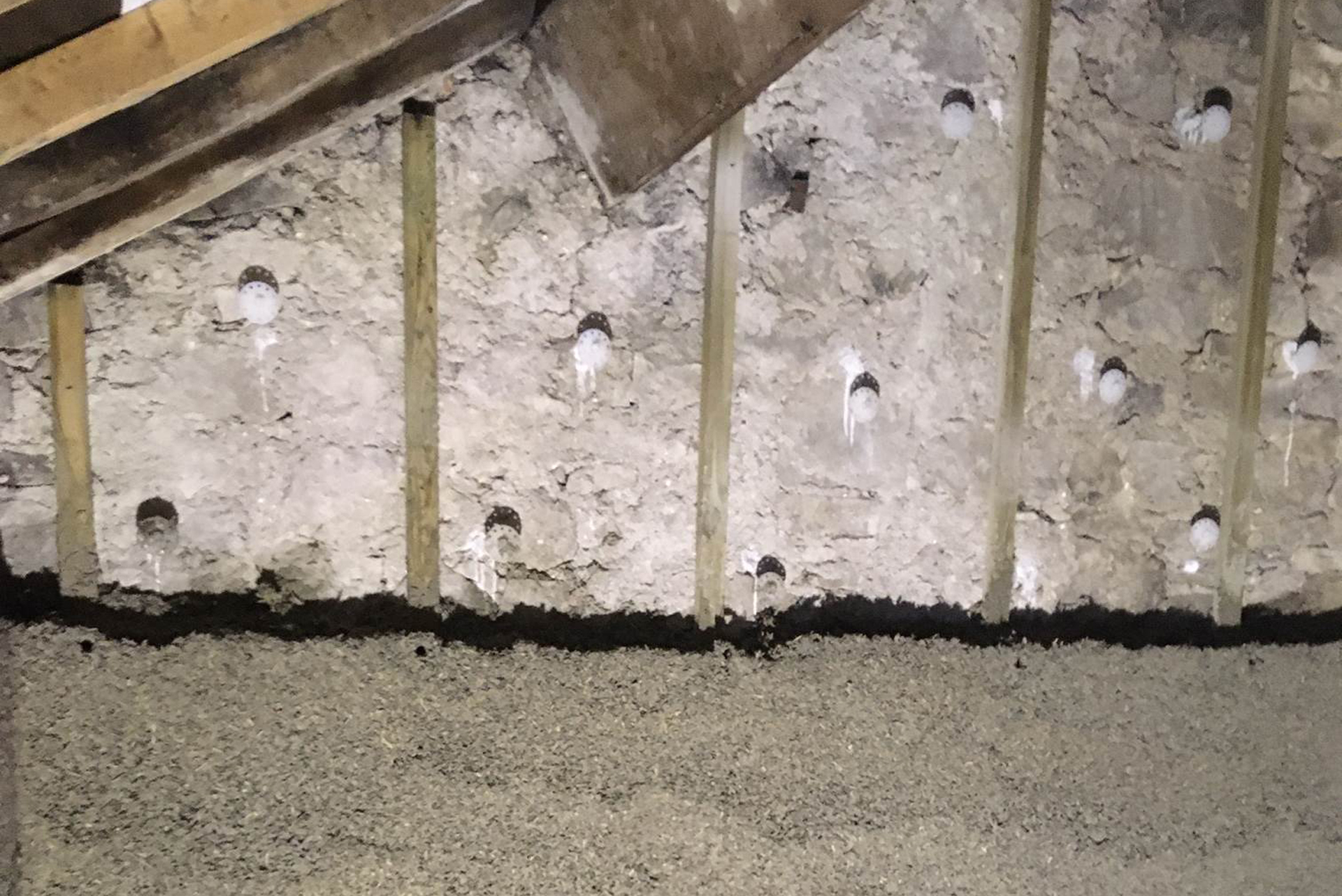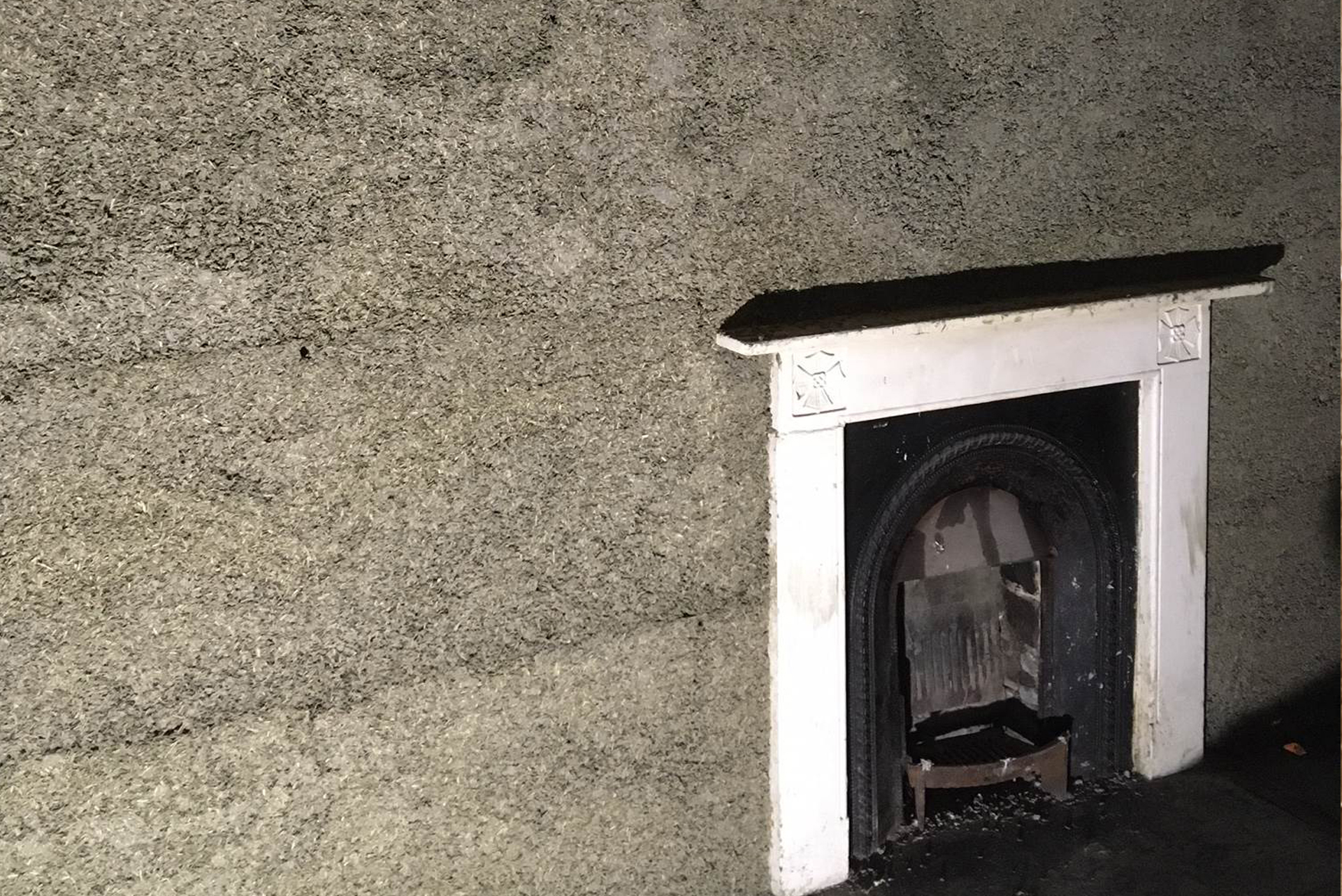ETICS anchor provides innovative solution for eco-insulation
EJOT’s EWI anchoring products have helped a Yorkshire building contractor to use hemp-based insulation as part of the sustainable upgrade of a 200 year old cottage.
The brief to Settle-based AST Building Maintenance was to extensively refurbish the traditional stone-built Yorkshire Dales property to the highest standard using sustainable materials as much as possible. Before the conversion project started, the three-storey building had been empty for five years, having previously been used as a workshop for glaziers, joiners and shoemakers.
Hemp as a building material is processed to create Hempcrete, a bio-composite material that also contains hurds and lime. It is a carbon negative product because as it is plant-based – CO2 from the atmosphere is absorbed as hemp grows, retaining the carbon and releasing the oxygen. And once applied to a building, during the curing process, as lime turns to limestone, the carbonation of the lime adds to this effect.
The approach adopted by AST was to cast the new walls on-site – rather than using factory-made Hempcrete blocks – using a hemp shriv and lime mortar mix. The walls are formed one section at a time by using a standard 18mm OSB board secured over the curing mix, which is then moved when ready to ‘build up’ the next section of the hempcrete mix.
To provide a strong bond to the raw stone wall structure of the house, the newly created hempcrete walls needed a secure connection, which is where EJOT’s H1 eco anchors offered the solution. These widely used hammer-in anchors, which are approved for all building material categories, are ordinarily used for clamping insulation to a building structure, but here they are used in a more innovative way.
Each anchor was set into the stone wall to the approved depth of 50mm, allowing the 60mm diameter washer face to sit away from the forming cast. The result of this was to create a series of anchor points for the wet mix, hemp shriv / lime compound to grip under and around as it cures.
The result is a robust wall construction that plays an important role in meeting the client’s goal of achieving more sustainable home. More than this, however, their new home is actually a living, breathing example of a how a traditional stone-built property can be renovated in a way that satisfies today’s much higher thermal, acoustic and fire protection standards, with a reduced carbon footprint.
As more clients choose more sustainable buildings materials and methods, like the use of Hempcrete, the skill and craftsmanship of forward-thinking refurbishment experts like AST will be in high demand. So too will the demand to find new and inventive fastening solutions to ensure quality, safety and security standards can always be satisfied as the EJOT H1 eco anchors have demonstrated in this project.
EJOT H1 eco anchors are part of an extensive range of fixing solutions for all kinds of building substrates, including many different types of insulation. This advanced product range is backed by EJOT’s experienced UK team who can provide a complete sales, specification and installation support service to ensure customers arrive at the most effective fastening solutions.
The brief to Settle-based AST Building Maintenance was to extensively refurbish the traditional stone-built Yorkshire Dales property to the highest standard using sustainable materials as much as possible. Before the conversion project started, the three-storey building had been empty for five years, having previously been used as a workshop for glaziers, joiners and shoemakers.
Carbon-neutral Hemp: An obvious material choice
Despite its recent non-residential past, the property retained all its original fittings, including sash windows, shutters and open fireplaces to provide the ideal platform for conversion into a dwelling with character. The client, and new home owner, was particularly keen to ensure the newly upgraded building could breathe naturally, a decision that would require insulating walls on the interior using a carbon neutral material. Hemp, therefore, was the obvious material choice.Hemp as a building material is processed to create Hempcrete, a bio-composite material that also contains hurds and lime. It is a carbon negative product because as it is plant-based – CO2 from the atmosphere is absorbed as hemp grows, retaining the carbon and releasing the oxygen. And once applied to a building, during the curing process, as lime turns to limestone, the carbonation of the lime adds to this effect.
EJOT products in the mix, on site
The approach adopted by AST was to cast the new walls on-site – rather than using factory-made Hempcrete blocks – using a hemp shriv and lime mortar mix. The walls are formed one section at a time by using a standard 18mm OSB board secured over the curing mix, which is then moved when ready to ‘build up’ the next section of the hempcrete mix.To provide a strong bond to the raw stone wall structure of the house, the newly created hempcrete walls needed a secure connection, which is where EJOT’s H1 eco anchors offered the solution. These widely used hammer-in anchors, which are approved for all building material categories, are ordinarily used for clamping insulation to a building structure, but here they are used in a more innovative way.
Each anchor was set into the stone wall to the approved depth of 50mm, allowing the 60mm diameter washer face to sit away from the forming cast. The result of this was to create a series of anchor points for the wet mix, hemp shriv / lime compound to grip under and around as it cures.
The result is a robust wall construction that plays an important role in meeting the client’s goal of achieving more sustainable home. More than this, however, their new home is actually a living, breathing example of a how a traditional stone-built property can be renovated in a way that satisfies today’s much higher thermal, acoustic and fire protection standards, with a reduced carbon footprint.
As more clients choose more sustainable buildings materials and methods, like the use of Hempcrete, the skill and craftsmanship of forward-thinking refurbishment experts like AST will be in high demand. So too will the demand to find new and inventive fastening solutions to ensure quality, safety and security standards can always be satisfied as the EJOT H1 eco anchors have demonstrated in this project.
EJOT H1 eco anchors are part of an extensive range of fixing solutions for all kinds of building substrates, including many different types of insulation. This advanced product range is backed by EJOT’s experienced UK team who can provide a complete sales, specification and installation support service to ensure customers arrive at the most effective fastening solutions.





